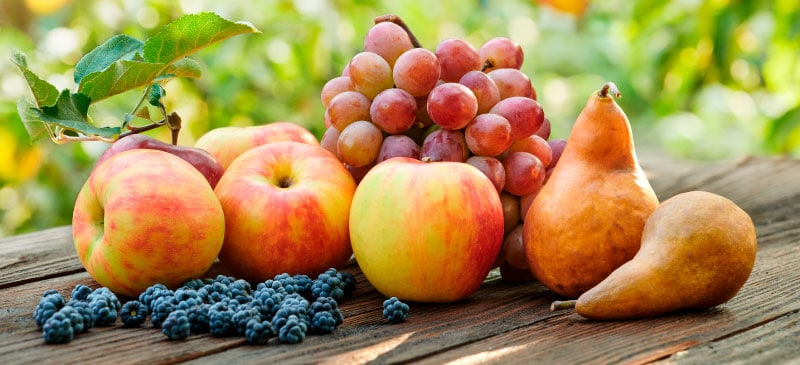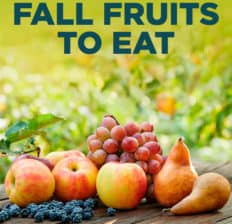This Dr. Axe content is medically reviewed or fact checked to ensure factually accurate information.
With strict editorial sourcing guidelines, we only link to academic research institutions, reputable media sites and, when research is available, medically peer-reviewed studies. Note that the numbers in parentheses (1, 2, etc.) are clickable links to these studies.
The information in our articles is NOT intended to replace a one-on-one relationship with a qualified health care professional and is not intended as medical advice.
This article is based on scientific evidence, written by experts and fact checked by our trained editorial staff. Note that the numbers in parentheses (1, 2, etc.) are clickable links to medically peer-reviewed studies.
Our team includes licensed nutritionists and dietitians, certified health education specialists, as well as certified strength and conditioning specialists, personal trainers and corrective exercise specialists. Our team aims to be not only thorough with its research, but also objective and unbiased.
The information in our articles is NOT intended to replace a one-on-one relationship with a qualified health care professional and is not intended as medical advice.
Top 11 Fall Fruits + Their Benefits
October 15, 2022

Farmers markets are in full swing throughout the fall, making it easy to eat seasonally, as well as to pick up autumn decorations like pumpkins, mums and gourds. You might already know which veggies are most abundant once the weather gets cold, but what fall fruits are in season in the autumn?
If you’re a fan of spiced apple cider, you’ll won’t find it surprising that apples peak this time of year. Other fall fruits to pick up include pumpkins (technically fruits!), pears, cranberries, kumquats, pomegranates and grapes.
Top 11 Fall Fruits
Fruits vs. vegetables, which are better? The truth is both provide many essential nutrients, such as antioxidants, electrolytes and fiber, making them important parts of balanced diets.
What fruits are best in autumn? Below are some of the most popular fall fruits to seek out throughout autumn:
1. Apples
There are thousands of different types of apples in existence, but around one dozen are most widely available in many countries, including honey crisp, macintosh, gala, fuji and red delicious apples. Peak season for apples tends to be late summer though late fall, or roughly September to November.
As a great source of fiber, apples are helpful for preventing constipation — plus they’re filling and make a great on-the-go snack.
You can keep apples for a relatively long time as long as you store them in a cool, dry place.
What can you do with apples? Of course there’s apple pie, but also try making baked cinnamon apples (stuff them with raisins and oats), cider and sauces for meats.
2. Pumpkins
What celebratory fruit is in season in October? Pumpkins.
That’s right — pumpkin is, in fact, a fruit. That’s because it’s a “seed-bearing structure of flowering plants.”
You’ll find many types of pumpkins, as well as other related squashes, in markets during the cooler months of the year. While some pumpkin species are best used as decorations, others can be cooked and eaten. They’re naturally sweet, high in vitamins C and A, which act like antioxidants, and a good source of dietary fiber.
Keep pumpkins somewhere dry and cool for up to four months. Try roasting them whole, scraping out the seeds, and using the flesh in baked goods, pies and other desserts — or in similar ways as sweet potatoes (such as mashed with butter and spices).
3. Pears
Similar to apples in terms of their fiber content and nutrition profile, pears are a tasty fall fruit to enjoy in both sweet and savory recipes. They make a great addition to salads, pies, homemade purées, smoothies and sauces. Check out these pear recipes for inspiration.
4. Cranberries
From mid- to late fall, cranberries are harvested in places such as the Northeast United States. They’re a valuable source of compounds such as anthocyanins, quercetin, benzoic acid and epicatechins, plus vitamin C.
These red little berries are a favorite in sauces, pies, scones, muffins and cakes — plus they’re often dried and used in trail mixes and cereals.
Fresh cranberries have a sweet and tart flavor, so many prefer to cook them, sweeten them or dry them. You can store them in plastic bags in the refrigerator or freeze them. They should stay fresh for about one month in the fridge.
5. Grapes
Whether you like red, green or black grapes best, you’ll find them available in local markets from late summer through early fall. Grapes are a rich source of antioxidants, including anthocyanin, which is one reason why eating them has been linked with longevity. Plus, they provide vitamin C, potassium and vitamin K.
Enjoy grapes on their own as a snack, dry them to make raisins, or add some to smoothies, salads or roasted meat dishes.
6. Kumquats
Not familiar with kumquats? They look like small oranges and are one of the best sources of vitamin C and fiber. They’re also considered winter fruits because they’re in season for many months, where they grow in warmer parts of the world, such as the Southern U.S.
Kumquats are actually the only citrus fruit that can be consumed with the peel, which contains even more concentrated amounts of antioxidants than the pulp. Use them in the same way as other citrus fruits, such as to make fresh juices, as a snack on their own, or in smoothies or tarts.
7. Passion Fruit
From early to mid-fall, passion fruits grow in places where it stays warm almost year-round. They have a signature sweet-sour taste and are highly aromatic — plus their juices make great additions to drinks, acai bowls and smoothies.
Incorporating passion fruit into recipes is a great way to boost your intake of antioxidants like vitamin A, vitamin C, polyphenols, beta-cryptoxanthin and carotenoids.
8. Guava
Available in larger markets, especially those that sell tropical fruits, guava is high in vitamin C , copper and lycopene, the same type of antioxidant found in tomatoes. Use it in cocktails or mocktails, fresh pressed juices, yogurt bowls, and sauces. It can also help flavor herbal teas, iced teas and other healthy drinks.
9. Persimmons
Persimmon is a round, orange fruit that peaks in late fall. it supplies you with vitamin A, vitamin C and manganese. It also contains antioxidants, such as gallic acid and epicatechin gallate, two compounds that are associated with health perks related to cardiovascular function and inflammation.
Perimmon’s skin is very thin and entirely edible, so you can simply wash it off and eat it like an apple. It also makes a tasty addition to tarts and other desserts.
10. Pomegranates
Pomegranate is a red, sweet and sour fruit that contains lots of tasty seeds. The seeds are rich in antioxidants, including flavonoids, plus vitamin K, vitamin C, folate and potassium.
Look for fresh pomegranates at markets in mid- to late fall. Try popping the seeds out and adding some to yogurt, oatmeal or salads.
11. Quinces
Quince is a lesser known fall fruit that’s lumpy, pear-shaped and bright green. It’s high in vitamin C, fiber, copper, potassium and antioxidants, including caffeoylquinic acid and rutin.
Most people enjoy the taste and texture of quince best when it’s boiled, so if you can find it at markets, cut the fruit into quarters, remove the core and seeds, slice off any soft spots, and then boil it for about 4o minutes. Use the flesh/pulp in juices, tarts, purees and other sweet treats.
According to the U.S. Department of Agriculture, other fruits that may be available throughout the fall include:
- Lemons and limes
- Kiwi
- Pineapple
- Bananas
- Raspberries and cherries (in some locations)
- Figs and dates
Health Benefits
What are the perks of adding more seasonal fruit to your diet? When you choose to eat produce that’s in-season, including fall fruits, you’ll benefit from:
- More nutrients, especially if you buy organic produce.
- Better, fuller taste than produce that’s been grown out of season and picked early.
- Less expensive produce than what’s not in season.
- Plus you help reduce your carbon footprint, since it uses a lot of energy to grow and transport food from around the world.
Below are more benefits of adding different types of fruits to your diet:
- Higher intake of vitamin C — Many fruits, such as cranberries and kumquats, are high in this antioxidant, which helps support immune function and fights free radical damage.
- Helps you meet your need for fiber — Fiber aids in digestive and gut health in many ways, such as by fighting constipation, making you feel full, balancing cholesterol levels and “feeding” friendly probiotic microbes living in your gut microbiome. Eating plenty of fiber also supports a healthy weight.
- Supports cognitive function— Antioxidants, such as anthocyanin, flavonoids and polyphenols, found in fruits have been shown to boost brain function and decrease cognitive decline.
- Aids in heart health— Eating more antioxidant-rich fruits can help normalize cholesterol and blood pressure levels while also reducing inflammation.
- Helps lower risk for certain cancers.
- Supports bone health.
- Aids in liver and kidney function.
How to Add to Your Diet
The great thing about fruits is how versatile they are. They can be added to many breakfasts, eaten as a healthy afternoon snack, dehydrated to keep them for longer, or used in smoothies, baked goods and desserts.
Many fall fruits can be sliced and frozen to be used at a later time. Put them in freezer-safe bags, and easily toss some into shakes, oatmeal, muffins, etc.
Here are some recipe ideas using the fall fruits mentioned above:
- Gluten-Free Pumpkin Bread
- Gluten-Free Apple Galette
- Grape Jelly Meatballs
- Apple Cinnamon Muffins
- Beet and Pomegranate Salad
Risks and Side Effects
How much fruit is good to eat each day? Most people can benefit from about one to three servings daily, or about one to three cups. If you’re more active and require more calories in general, eating more fruit is a great idea.
To reduce your exposure to pesticides, which are commonly sprayed on fruits such as apples, pears and grapes, opt for organic fruits whenever possible.
Look for fruits without soft spots, brown or dark spots, or signs of mold.
Each type should be stored somewhat differently in order to prevent growth of bacteria and to keep them fresh, so pay attention to storage recommendations when shopping for different fall fruits.
Conclusion
- What are fruits that are in season in the fall? Some include apples, pears, pumpkins, quinces, persimmons, grapes, pomegranates and kumquats.
- Benefits of eating these fall fruits while they’re in season include consuming more antioxidants, fiber, vitamin C and other nutrients.
- They can potentially help you maintain a normal weight, aid in digestion, and assist in heart and cognitive health.













